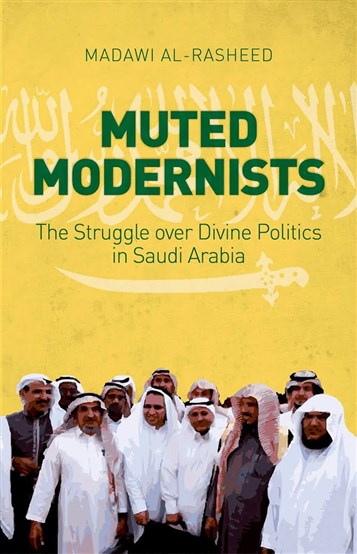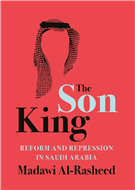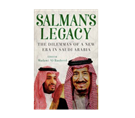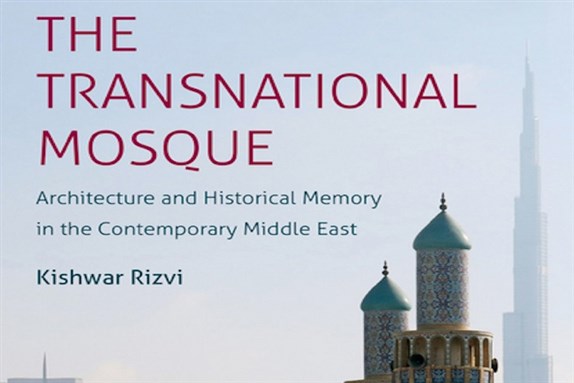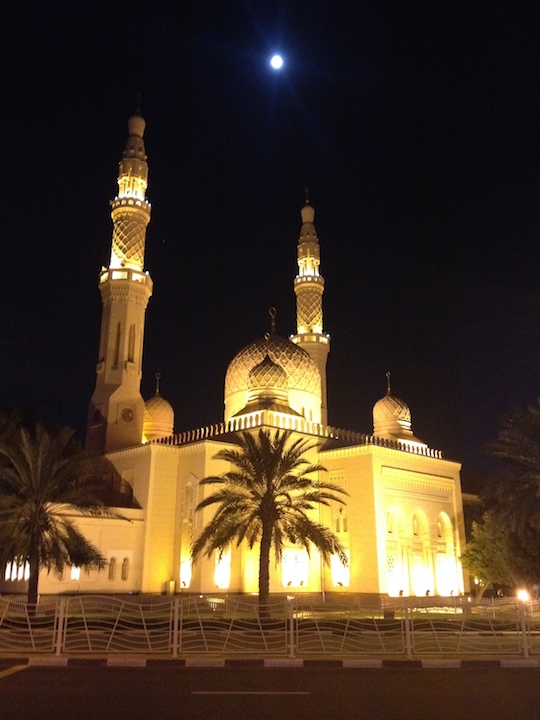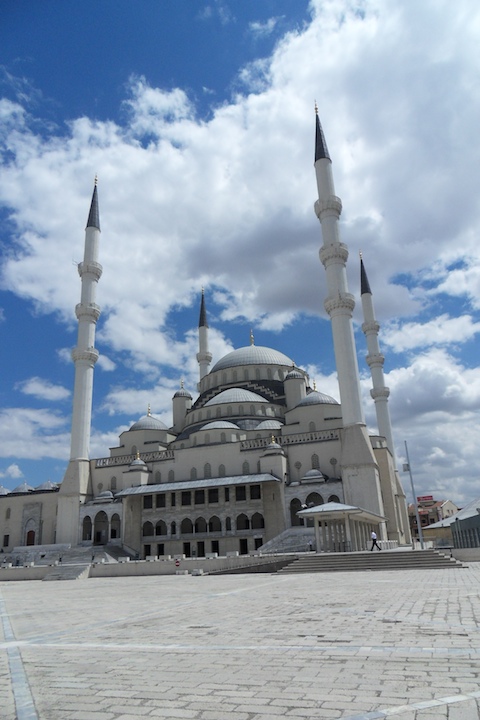Madawi Al-Rasheed, Muted Modernists: The Struggle over Divine Politics in Saudi Arabia (Hurst and Oxford University Press, 2015).
Jadaliyya (J): What made you write this book?
Madawi Al-Rasheed (MA): My interest in Islam and politics in Saudi Arabia has been ongoing for a couple of decades. The project engaging this focus started with a historical account about how the relationship gave birth to several attempts to create a state. From history, I moved to a more social science approach to look at the contemporary period. Most observers of Saudi politics assume that Wahhabiyya, the eighteenth century religious movement, was simply a pretext to establish the Al-Saud rule and grant them Islamic legitimacy. While this is taken for granted, I wanted to go beyond this and investigate how religion and state are often two totalizing regimes that do not have a smooth relationship. In a previous book, I examined the fragmentation of Wahhabiyya under state control, which led to the emergence of radical Jihadi trends, often in conflict and cooperation with the state. I identified three modus operandi between the two sides of the relationship: cooperation, appeasement and repression.
Muted Modernists was related to the Arab uprisings and their impact on Saudi Arabia. I wanted to engage with a relatively new intellectual mutation among Saudi Islamists and non-Islamists, namely the emergence of a modernist intellectual trend. This trend is labelled asrani (contemporarians), or tanwiri (enlightened). I use the term modernist to analyze the discourse and strategies of a limited number of `ulama, activists and intellectuals who are stretching the limits of interpretation of foundational Islamic texts in order to promote new thinking about politics and society.
The immediate trigger for writing the book was a very sad story. In 2012, Sulayman al-Rushoudi, an eighty-year-old human right activist and judge in Saudi Arabia, was sentenced to fifteen years in prison. According to Amnesty International, “he was convicted on charges including possessing banned articles by Professor Madawi Al-Rasheed, an academic at a UK university.” I felt a strong responsibility to understand why a Salafi judge was reading my articles and I hoped that my book will contribute to documenting the struggle of many activists who became known as the Saudi Association for Civil and Political Rights (ACPRA) or HASM in Arabic.
J: What particular topics, issues, and literatures does the book address?
MA: The book focuses on two main issues: a) the discourses that inspired the emergence of a civil and political rights movement. This included the intellectual productions of `ulama such as Salman al-Awdah and Islamist intellectuals such as Abdullah al-Hamid, and Muhamamd al-Ahmari. They were all concerned with a central question: how to establish al-dawla al-madaniyya, civil state. I also looked into the intellectual production of a younger generation of Saudi Islamist intellectuals such as Abdullah al-Maliki and Muhammad al-Abd al-Karim, both were concerned with the question of how to apply sharia and how to deconstruct the religious roots of authoritarian government. Both are critics of the Islamist movement in Saudi Arabia, although they are both a product of it. I also wanted to map the activism of those who acted on the ideas and put them into practice. So I examined the activism of HASM and the plight of their founders and followers. By doing this I combined my intellectual history with a social scientific focus on experiences and practices.
I interviewed activists and also followed their trials in court. I found Saudi courts transformed into a theatrical performance where the discourse on human rights, civil society and democracy became strong with followers tweeting about the events and sending messages from the floor. Saudi Arabia has never seen anything like this but social media allowed this to happen. The official press had to respond and name activists and report on their trials, something that had never been on the agenda.
I engage with the vast theoretical literature on Islamism in both the social sciences and the humanities (religious studies). I also try to critically assess the Western tradition that gave rise to the social sciences especially that which deals with religion. Our categories are sometimes not so helpful when it comes to studying Muslim society, with Islam and Muslims are still accused of being resistant to secularization. I am very skeptical about such essentialist approaches and I hope my book contributes to revising and refining such assertions.
J: How does this book connect to and/or depart from your previous work?
MA: It was refreshing to embark on this project because I began to explore how, from within Islamic tradition, we come across serious attempts to find solutions to urgent problems that occupy people in the Arab world. My interlocutors are all a product of the Saudi Salafi-Wahhabi context, yet each one tried to infuse the tradition with modern concepts such as civil society, just government, human rights, and many other global concerns. I found a hybrid discourse that engages with Western intellectual tradition and also Arab modernist thought. While most people still believe that Saudi Arabia has only exported a radical religious tradition, namely Salafi Jihadi ideology, I found that Saudis themselves are influenced by a world intellectual heritage and history. The novelty of this research within the Saudi context was a refreshing departure from the bigoted and misogynist fatwas and opinions that I had worked on in my previous books. After writing the book, I was shocked by how threatening these modernists can be from the perspective of the Saudi government. Most of them are still in prison serving ten to fifteen years in prison, followed by bans on any travel after their release. I realized how governments oppress the most peaceful thinkers and activists, both called for peaceful mobilization, dubbed as civil Jihad, and criticized those who want to apply sharia by force after the Arab uprisings. I came to the conclusion that those modernists are more threatening than violent Jihadis, as far as government is concerned. The government does not need to justify shooting Jihadis and in fact gets the full support of society when it prevents their violence. However, peaceful activists are a different category; they provide a peaceful way out of persistent authoritarianism, and may precipitate a social movement against oppression.
J: Who do you hope will read this book, and what sort of impact would you like it to have?
MA: As all academic books, the first audience is probably the academic community of scholars and students in Middle East Studies, Religious Studies, and the social sciences. But I wrote the book in such a way to make it accessible to a wide audience, for example NGOs, policy makers, journalists and the general public. I hope the book is translated into Arabic so that it can reach an even wider audience.
J: What other projects are you working on now?
MA: After the fall of several Arab presidents, some scholars began to theorize why only the Arab republics experienced severe upheavals that led to toppling presidents while monarchies are considered by some as innately immune from such upheaval. This concern increased after the Arab uprisings and started building on an earlier political science literature about the resilience of Arab monarchies. When the findings of this important literature is appropriated by Think Tank consultants and lobbyists they become hostage to other agendas, trying to project Arab monarchies, especially GCC states as islands of stability in a turbulent Arab sea. Now monarchy is reinvented as a stable, caring and not so oppressive political configuration, unlike the nasty republics of the Arab world. I want to engage in this literature and test its application on the Saudi case. I have already published working paper to see whether I am on the right path to pursue this project.
Excerpt from Chapter One:
The Arab uprisings pushed many reformers to start a second round of petitions, hoping that the king would respond under the pressure of the turbulence in the region.
In February 2011, several new petitions were circulated online, calling for political reform. The regime moved very quickly to censor the sites but hundreds of new young activists and old reformers whose names had been associated with previous political mobilisation rushed to circulate them and increase the number of signatories. Three petitions were focused on political reform and youth issues, and a fourth one had obvious traditional Salafi orientation.
The first 2011 petition called ‘The Declaration of National Reform’ demanded the gradual evolution of the regime to constitutional monarchy echoing earlier petitions in 2004. The 119 signatories aspired towards a federal political system that would free the various Saudi regions from Riyadh’s centralised political and administrative control. Those who prepared the petition clearly reflected fears that in light of the Egyptian revolution, the Sunni Islamist opposition, especially that based in London and the new ones emerging in Saudi Arabia, would take the initiative and dominate the Saudi street. The petition was counted as a liberal document calling for gradual political reform.
The petition contained twelve points demanding fundamental political, economic, social and judicial reforms. It insisted on the urgency of implementing the rule of law, equality, the protection of civil and human rights, political participation, equitable development, eradication of poverty and corruption, and national election to an assembly. Most importantly, petitioners wanted a written constitution, real independent civil society, and elected local government in the provinces. While the first demand was not knew, the second indicated that in the minds of the reformers the existing organisations such as the government appointed human right associations are simply bureaucratic governmental agencies. The third demand indicated that regional autonomy is desired, especially after corruption scandals related to land development and confiscation, in addition to mismanagement of development projects led to serious flooding and deaths in several Saudi cities. In February 2011, Jeddah was the most affected by flooding resulting in rainwater and sewage creating stagnating lakes where ten people drowned and hundreds of houses were swept away. The petition concluded by asking the king to announce his intention to start political reform, release all prisoners of conscience from prison, lift the ban on travel imposed on reformers, and reinstate freedom of expression.
Immediately after this petition, a second document was released in February 2011, this time reiterating commitment to Islamic principles and without openly calling for constitutional monarchy or regional government. This petition was the work of Islamist reformers who wanted to avoid the controversial “constitutional monarchy” in order to appeal to a wider circle among those associated with the Islamic Awakening. The new petition entitled nahwa dawlat al-huquq wa al- muasasat, “Towards a State of Rights and Institutions” asked for an elected national assembly, separation between the office of king and prime minister, end to administrative corruption, freedom of speech, independent associations, release of all political prisoners, and lifting the ban on travel imposed on activists. Within days, this petition attracted over 9000 signatories, thus reflecting a growing Islamist trend that is equally calling for political reform with specific demands. The wide circle of signatories reflected a strong Islamist constituency and included famous Sahwi names such as sheikh Salman al-Awdah, judge Suleiman al-Rushoudi, Muhammad al-Ahmari and Abdullah al-Maliki, discussed later in this book. This petition was the first in Saudi recent times to move beyond important activists and reach a large number of ordinary Saudis. The petition benefitted from online activism that made it accessible to people despite government efforts to censor the sites on which it was posted. The two petitions were clearly the work of well-established activists, intellectuals and religious scholars.
However, a third call originated in 2011 among unknown youth and was certainly triggered by the Arab uprisings. A long document entitled matalib al-shabab al-saoudi, (Demands of the Saudi Youth) attracted more than 10,000 signatories and included 14 points. This detailed petition focused on concrete economic and political demands. The youth introduced themselves as educated voices belonging to various Saudi provinces. They claimed that their demands reflect those of the majority of youth. The petition requested the government to deal with unemployment as a matter of urgency, and increase unemployment benefits to 5000SR and minimum wage to 7000SR. Housing, inflation, and supporting the private sector were considered a priority to empower the youth. On political reform, the petitioners demanded lifting the ban on independent associations, reforming the judiciary, and freeing political prisoners. They also demanded an elected national assembly that would form future governments and elected provincial local councils in ways that return local government to the people. Empowering women, reforming the educational system and eradicating crimes that undermine social security were also mentioned.
In contrast to the above mentioned three petitions, signed by a mixture of lay reformers, religious scholars, and youth activists, a forth petition called bayan dawah lil-islah (Call for Reform), was predominantly signed by sixty five Salafi religious scholars including famous Sahwi Salafi sheikh Nasir al-Omar. The petition was framed as traditional nasiha, advice to the ruler and reminded the Saudi leadership of the pact between the founder of the first Saudi state, Muhammad ibn Saud and Muhammad ibn Abd al-Wahhab, the eighteenth century founder of Wahhabiyya. The demands centred on fighting corruption, freeing political prisoners, dealing with unemployment, protecting property and lives, and ridding Saudi media of secularists and those who corrupt public and private morality. Unlike the previous petitions, this overtly Salafi document does not call for major transformation of the Saudi state into a constitutional monarchy or national elections. Moreover, it is concerned with returning the Saudi polity to the original model of the first Saudi state, established in the eighteenth century and the alliance between the Wahhabi founder and the Saudi rulers. The petition clearly considers the current state to have deviated from applying sharia as it introduced new laws and decrees, all considered to have deviated from the historical Saudi-Wahhabi state model of the eighteenth century and calls upon the leadership to honour its commitment to Islamic principles.
While the above petitions and online activism were primarily concerned with local Saudi issues, regional concerns were expressed in a new document that denounced the removal of elected Egyptian President Muhammad Morsi by the military in July 2013. The petition ‘Saudi Intellectual Support for the Egyptian People’ attracted 1700 signatories. It was meant to denounce Saudi government’s alleged intervention to remove the Egyptian Muslim brotherhood from power. While the petition did not mention the Saudi government by name, it clearly stated that it denounces foreign intervention in local Egyptian affairs. After the Egyptian coup in July 2013, the Saudi government offered generous economic subsidies to the Egyptian military that ousted Morsi.
The petition started by citing Quranic verses encouraging believers to lend each other mutual support and cooperation. In this spirit, the petitioners insisted that the Saudi people respect the legitimate elected Egyptian government, denounce shedding the blood of anti-coup protestors, reject foreign governments’ intervention in Egypt, support the protestors in Rabaa Square where Muslim Brotherhood activists gathered, and condemn the suppression of freedom of speech in Egypt following the coup. After the circulation of this petition, the Saudi authorities called several Islamist activists, including well-known sheikh Muhsin al-Awaji, who was believed to be one of the main organisers of the petition, and Muhammad al-Oraifi known for his support for the ousted Egyptian government for questioning. The latter was banned from travelling to Qatar to deliver sermons and al-Awaji was released after several days in prison.
It is worth mentioning that all petitions invoked the Arab uprisings as the context that should encourage the leadership towards implementing serious political reform. With the exception of the Salafi petition and the petition concerned with Egyptian matters, the documents included a list of political and economic demands that had already been articulated in the first round of post 11 September petitions. The petitions did not call for the overthrow of the regime but they pointed to serious shortcomings and disappointment with the government. Nowhere was there a call in these petitions for peaceful demonstrations along those that had already started in Arab capitals. The authors and signatories made sure that opposition outside Saudi Arabia was not openly involved in the preparation of the documents in order to avoid direct confrontation with the regime. In private conversation with many reformists, it was clear that they refrained from taking a radical stance to avoid arrest and accusations of causing chaos and coordinating their efforts with ‘outside agents’. Signatories insisted on previous reform agendas expressed throughout 2003-8 and pledged allegiance to the Saudi king. In fact most of the activists were either well-known old veterans of reform such as Muhammad Said al-Tayib and Abdullah al-Hamid, or new shabab, young netizens, who played an important role in organising the dissemination of the petitions and publicity on Facebook and Twitter.
